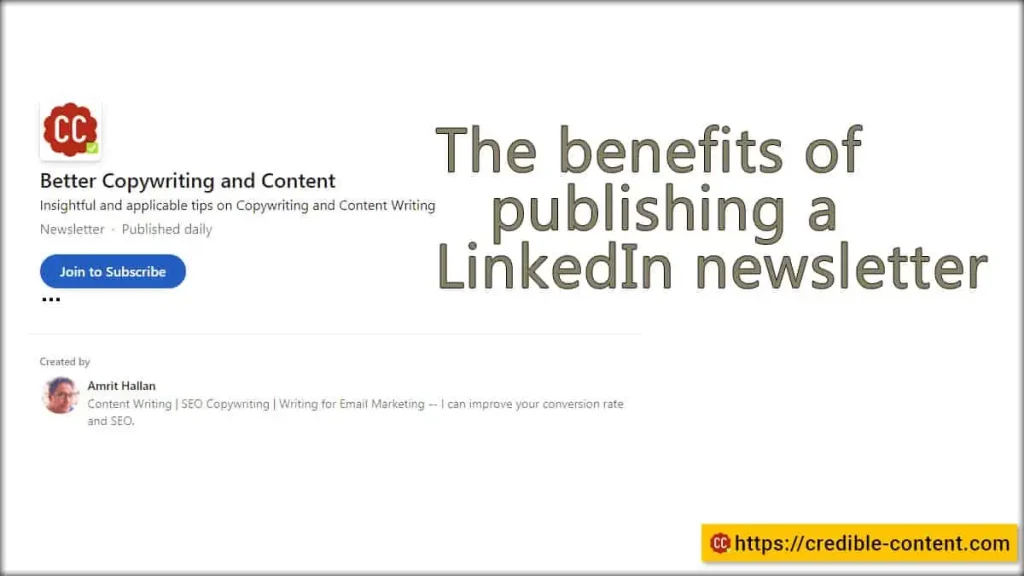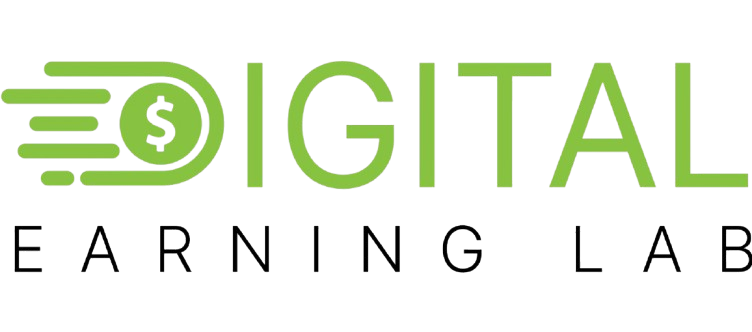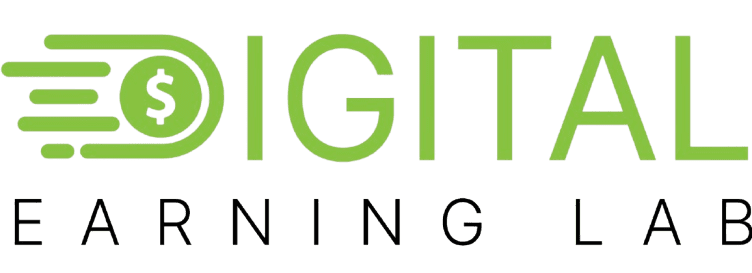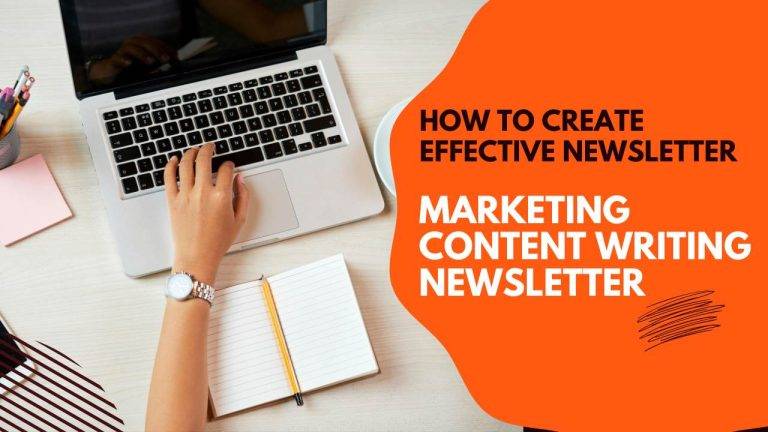A marketing content writing newsletter keeps your audience engaged and informed. It boosts brand awareness and drives conversions.
To create an effective marketing content newsletter, you need a well-thought-out strategy. Begin by understanding your audience’s needs and preferences, then tailor the content to deliver value. This can be through insightful articles, industry trends, or exclusive promotions. Consistency is critical—regular newsletters build familiarity and trust with your subscribers.
Utilize compelling headlines and effective calls to action (CTAs) to enhance engagement. Integrating visuals like images or infographics enhances the appeal of your content. Furthermore, it is essential to optimize your newsletter for mobile devices, given that a significant number of individuals access emails via their smartphones.
Monitor performance metrics such as open rates, click-through rates, and conversion rates to consistently enhance your strategy. By concentrating on providing high-quality content and maintaining consistency, you can cultivate a dedicated subscriber base and achieve substantial engagement over time.

Credit: www.talentedladiesclub.com
Importance Of Newsletters
Newsletters are an essential aspect of your marketing. What better way to speak directly to your audience than with a newsletter? The right newsletter can improve engagement, build connections and boost conversions.
Building Relationships
Newsletters also deepen relationships: the more regularly your audience hears from you, the more ingrained your brand becomes in their consciousness – and the more loyalty you build.
Similarly, readers respond positively to a newsletter that contains carefully selected, personally relevant content. Readers might be more motivated to stay with a site when they feel that the content of the newsletter they receive has been carefully selected for them based on their behavior.
| Aspect | Benefit |
|---|---|
| Consistency | Keeps your brand top-of-mind |
| Personalization | Increases reader engagement |
| Trust | Builds long-term loyalty |
Driving Engagement
They are useful examples of an engagement tool in printable form. Newsletters continue to be popular despite the advent of the web and they are highly effective at encouraging engagement at a number of levels: they provide useful content that makes readers either go away to another part of the site, or click on and buy something.
Interactive features, such as polls or surveys, can be employed to increase engagement. This is because they trigger a more active interaction with your content.
- Include strong calls-to-action
- Use interactive elements
- Provide valuable, relevant content
Tending to these, newsletters can become tools of engagement – not just information-delivery devices that keep readers abreast of what you’re up to, but outreach instruments that work as dialogue and invite your readers to engage with your brand.
Crafting Compelling Headlines
One of the most effective ways to market your content-writing newsletters is to write good headlines. A headline is the start of your correspondence with a readers. It sets the mood of your entire newsletter. A good headline raises curiosity and keeps your credibility and hold over a readers.
Grabbing Attention
A catchy headline is needed. Power words and expression. Words such as ‘exclusive’, ‘new’ and ‘discover’. Master your headline length. Ideally, it’s 5-7 words maximum. Your headline is easy to read. No weird language.
Some titles you might want to consider using numbers in.Straight away, they stand out, and the reader will take in those numbers and think ‘oh, we’ll get five tips here’. So put those numbers in the headlines: 5 Tips for Better Marketing, 7 Secrets to Success.
Creating Curiosity
When readers begin with this type of headlines, they tend to want to know more. Teasers and questions are something that should be placed in the headline. For example, ‘Do You Fit Into One Of These Marketing Mistakes’ or ‘What Makes People Share A Particular Content?’. Following these type of headlines, the readers become more focused and want to read more.
Using doubts is also a valid method because it allows to create open loops. That is, posing a question through the headline but not answering it. For example “This Is Why Our New Strategy Worked Like Magic”. Of course, the reader will look for the answer to the question posed by the author, what was that strategy that turned out to be so effective. This assists the reader in proceeding further.
| Headline Type | Example |
|---|---|
| Attention-Grabbing | “Exclusive: New Marketing Trends for 2023” |
| Numbered List | “7 Ways to Improve Your Email Campaign” |
| Curiosity-Driven | “What’s the Secret to Viral Content?” |
| Open Loop | “How One Simple Trick Increased Our Sales” |
Bear in mind that it is not easy to create a headline that is both effective and interesting. Try different styles and choose one that supports your audience best. It is important to hook the audience in the beginning and keep them interested to the last.
Personalization Techniques
The use of so-called personalization in writing marketing content can be quite helpful in about any field including newsletters. When reading personalized newsletters, people feel heard and appreciated. There are problems with the techniques used and the content may not be understood by the people addressed.
Segmenting Audience
Audience segmentation is critical for effective marketing communication and personalization. Split your subscribers into several segments taking into account their preferences, behaviors or demographics. This helps to target the information that they like.
Consider the information obtained from your customer relationship management tool, or mail application reaching your audience base. These are the parameters we will use to create segments:
- New Subscribers
- Returning Customers
- Product Interests
- Geographic Location
Audiences that have been segmented receive information targeted to them and so it is likely that higher open and click through rates will be achieved.
Using Names
In your newsletters, a name is used to capture interest from the reader and also create an emotional bond. A reader perceives that he or she has been noticed. For example, as the email starts, let the first name be the one that addresses your readers.
For example:
Dear [First Name],
It is important to ensure such names are also utilized in the body of the content. This keeps the reader focused and develops a relationship.
Consider using names in:
- Subject Lines
- Greetings
- Call to Actions (CTAs)
Customer’s names are particularly personalized on email for marketing purposes and this approach increases the emails’ open rate and the readers’ attention to the contents of the email.

Credit: www.yaagneshwaran.com
Effective Content Structure
Designing an Effective Content Structure for a marketing content writing newsletter is essential. This helps to get the relevant message across, and in an interesting way. This section will discuss important components such as introduction hooks and clear call to action in order to enhance the appeal of the news letters.
Introduction Hooks
It is very important to make the introduction as eye-catching as possible. This means avoiding lengthy complex sentences. Try using the following devices:
- Ask a question: Engage readers with a thought-provoking question.
- Share a statistic: Start with a surprising or relevant stat.
- Tell a story: Begin with a brief, relatable story.
The hook is likely the most crucial part of your newsletter as it prepares your readers for the rest of your newsletter. It makes the audience want to read more of the newsletter.
Clear Call To Actions
The Call to Action is an indispensable and often the most intimidating part of your marketing content. CTAs steer the reader toward what action to take next. Some of the suggestions include.
- Be specific: Use clear and direct language.
- Use action verbs: Start CTAs with verbs like “download”, “subscribe”, or “buy”.
- Keep it simple: Avoid complicated phrases.
- Make it visible: Ensure CTAs stand out on the page.
Now, doing substantive changes will help you achieve higher engagement rates than before. They will convert more of your audiences and lead to effective results.
| CTA Type | Example |
|---|---|
| Download | Download our free guide |
| Subscribe | Subscribe to our newsletter |
| Buy | Buy now and save 20% |
Employing these strategies will contribute positively in one’s conduct during the course of writing the newsletters. Capture readers’ attention from the onset and orient them to act by way of explicit CTAs.
Visual Elements
Pictures play an important role in the writing of marketing content because they attract the attention of the reader and make the content interesting. Images are not all however. They can also help to cut out large chunks of writing that are both time consuming and maybe sometimes ineffective.
Incorporating Images
These images have their function in draft-polishing – they relieve the text and the readers’ eyes. Quality images are also able to improve the overall compositional look of the newsletter.
Some suggestions on how to add details with pictures:
- Make use of images that fit the content.
- Make sure images are correctly scaled and of high quality.
- Provide alternative texts for better ranking in image search engines
| Image Type | Usage |
|---|---|
| Product Images | Showcase products, features, and benefits. |
| Event Photos | Highlight past events or upcoming gatherings. |
| Infographics | Explain complex data in a visual format. |
Utilizing Infographics
Infographics fit the bill in the depiction of data and statistics. These are something that could take the boring figures into graphics and images. These visuals are also worth looking out for as they are known to circulate your newsletter more.
Benefits of using infographics:
- They simplify complex information.
- They catch the reader’s attention.
- They are easy to understand at a glance.
Tips for creating effective infographics:
- Keep the design clean and uncluttered.
- Use contrasting colours to highlight key points.
- Include clear and concise text.
Leveraging Storytelling
Storytelling as a marketing tool is a major part of any published content and today there are no exceptions in creating content writing newsletters. Such a method is helping to engage the audience with the brand more. Through the utilization of stories in your content, you can make the newsletters more interesting and unforgettable.
Connecting Emotionally
An emotional tie with your audience is important. Stories are more memorable to people than plain facts. Use stories to bring up feelings of joy, trust, or surprise when appropriate to further connect on an emotional level with the reader.
For instance, share a customer success story. Bring out the problems they were facing and how your product came in handy in solving those problems. This not only makes it interesting for the readers but also acts as a value reminder for your product.
Creating Narratives
Narrative structures in newsletters can be quite engaging. Most narratives have a beginning, middle, and end. Introduce a common problem to begin, introduce the solution, and end positively.
Consider using the following elements in your narrative:
- Characters: Introduce people or personas that your audience can relate to.
- Conflict: Describe the problem or challenge they face.
- Resolution: Show how your product or service provides a solution.
This will grip readers and urge them to read completely.
Apply such techniques in telling stories through your newsletters. This wont just interest your readers but also increase conversion rates by making it more human.
| Element | Description |
|---|---|
| Characters | Introduce relatable people or personas. |
| Conflict | Describe the challenge or problem faced. |
| Resolution | Show how your product solves the problem. |
Optimizing For Mobile
Most people read newsletters on their phones. This means your marketing content writing newsletter must be optimized for mobile devices. Optimization for mobile will make your content work well with a larger number of readers. Here’s how to go about it.
Responsive Design
Implementing responsive design is crucial. A responsive design adjusts the layout to fit any screen size seamlessly. Utilize adaptable grids and layouts to guarantee that your newsletter maintains visual appeal on every device. Make sure to check how the newsletter looks on different devices before sending it out.
| Feature | Benefit |
|---|---|
| Flexible Grids | Adapts to various screen sizes |
| Fluid Images | Scales images proportionally |
| Media Queries | Applies different styles for different devices |
Readable Fonts
Fonts should be easily readable. This means using basic fonts that are clear on small screens— steer clear of ornate ones that are difficult to make out. Body text should be at least 16px. Lines should be at least 1.5 apart.
- Use simple fonts
- Ensure font size is at least 16px
- Set line spacing to at least 1.5
Follow these guidelines to make your newsletter easy to read from a mobile device. This way, you will have more people reading and interacting with what you send out.

Credit: credible-content.com
Analyzing Performance
It is very important to know how well your marketing content in the newsletter is doing. You need to be able to follow up on such key metrics and in so doing, you will be able to perfect your strategies and increase engagements.
Tracking Open Rates
Open rates indicate what percentage of recipients opened the newsletter. It is a major indicator regarding the effectiveness of the subject line of your email.
How to Improve Open Rates:
- Craft compelling subject lines.
- Personalize the subject lines.
- Send emails at optimal times.
Use email marketing tools to monitor open rates. Tools like Mailchimp and Constant Contact can help.
Measuring Click-throughs
Click-trough’s indicate the number of recipients who have clicked on a link within your newsletter, thus showing newsletter content engagement/relevance.
How to Improve Click-Through Rates:
- Include clear call-to-action buttons.
- Use engaging and relevant images.
- Ensure content is valuable and informative.
It lets you keep track of what kind of content can work best. Update strategies as a result.
Here is a quick comparison of important metrics:
| Metric | Definition | Tools |
|---|---|---|
| Open Rates | Percentage of opened emails | Mailchimp, Constant Contact |
| Click-Through Rates | Percentage of clicked links | Mailchimp, Constant Contact |
Looking at these metrics will help you do better on the next newsletter. These are the metrics you should concentrate on to enhance engagement and outcomes.
Marketing content writing newsletter template
Getting started with your marketing content writing newsletter involves a great template. This simple template allows you to be consistent and your content will still look professional. Add sections for click worthy headlines, value adding content, and powerful CTA. Keep things clean and clear with both the layouts and typography, using visuals that pop. Include surveys or polls to encourage your audience to interact with you. Customize the template to resonate with what your audience likes and enjoys. A top standard email template will allow you to improve your marketing and create eye-catching clear mail newsletters.
Frequently Asked Questions
What Is A Marketing Content Writing Newsletter?
A marketing content writing newsletter is an email you can send out periodically to give your targeted audience insights, advice or updates on skills required to affectively utilize written content in a marketing context.
How Often Should I Send A Content Writing Newsletter?
A content-writing newsletter should go out at least monthly. Consistency helps the audience to stay hooked and updated.
What Topics Should A Content Writing Newsletter Cover?
Writing tips, SEO strategies, content trends, and case studies are amongst the topics a content writing newsletter should address. It is a kind reminder for your subscribers to stay caught up with you.
How Do I Increase Engagement With My Newsletter?
Use an engaging subject line, valuable content and include call-to-action for higher engagement. Track your results, and keep making corrections to it as long as its not yet close to what you are expecting.
Conclusion
Marketing Content Writing Newsletter allow you to connect with your subscribers and increase conversion rates. Use that mental space instead to make great, beneficial content. The key to holding onto those subscribers, says Francisco, is consistency and personalization. Always put your audience first and optimize accordingly. Continue to Excellence, you will go a long way with that mindset and newsletters for you with their range.
<script type="application/ld+json">
{
"@context": "https://schema.org",
"@type": "Article",
"mainEntityOfPage": {
"@type": "WebPage",
"@id": "https://digitalearninglab.com/marketing-content-writing-newsletter-2024/"
},
"headline": "Marketing Content Writing Newsletter: How to Create effective newsletter",
"image": "https://digitalearninglab.com/wp-content/uploads/2024/09/Marketing-Content-Writing-Newsletter-How-to-Create-effective-newsletter-300x169.jpg",
"author": {
"@type": "",
"name": ""
},
"publisher": {
"@type": "Organization",
"name": "",
"logo": {
"@type": "ImageObject",
"url": ""
}
},
"datePublished": ""
}
</script>

